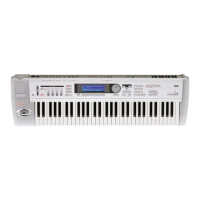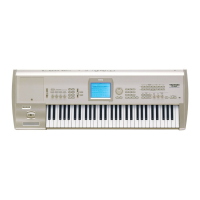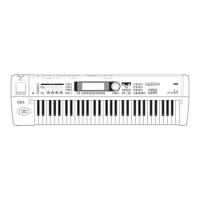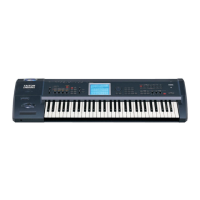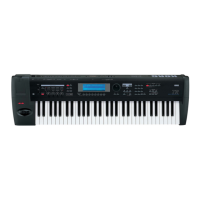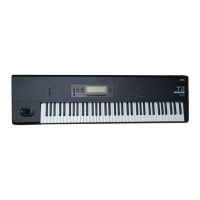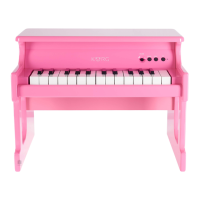5. Setting a parameter
8
5. Setting a parameter
The parameter value in an edit cell can be set using
four
types of
VALUE controllers
; the VALUE
slider, the [
▲
][
▼
] keys, the VALUE dial, and the VALUE ENTER keys. In some cases, the [BANK]
key and [COMPARE] key are also used.
In addition, popup buttons will sometimes bring up a popup menu that allows you to specify a
value, or a value may sometimes be input from the
keyboard or from a pedal
.
“... button” is one of the objects on the LCD. On the other hand, “... key”, “... dial”, and “... slider”
are located on the front panel. When this manual instructs you to “press the ... button,” operate the
button on the LCD, and when the manual instructs you to “press the ... key,” operate the corre-
sponding key on the front panel.
VALUE controllers
VALUE slider
Use this to make large changes in the value.
In Program Play mode and Combination Play mode, this slider can also be used as a controller
that controls alternate modulation or dynamic modulation.
[
▲
][
▼
] keys
Use these to make fine adjustments to the value.
VALUE dial
Use this to make large changes in the value.
VALUE ENTER keys
Use these to enter a specific value for a parameter. Use the numeric keys to input the number, and
press the [ENTER] key to finalize the parameter value. To specify a decimal point press the [.] key.
To specify a negative number press the [–] key. The [–] key can also be used to switch the sign of
the parameter value.
[COMPARE] key
This key is used to compare the sound of an edited program or combination with the un-edited
sound (i.e., the settings written into memory).
While editing a program or combination, pressing this key will cause the LED to light, and the set-
tings that were last written into that program number or combination number will be recalled.
Press the key again and the LED will go out, and the settings that you are editing will reappear.
If you edit the settings that are recalled by the [COMPARE] key (i.e., the written settings), the LED
will go out and it will not be possible to return to the settings you were editing before pressing the
[COMPARE] key.
[COMPARE] key
[BANK] key
VALUE controllers
VALUE dial VALUE ENTER keys[▲][▼] keysVALUE slider
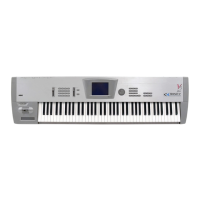
